Publications

Guidance note: Community engagement in Anticipatory Action
05/2023
The guidance note offers information and recommendations to FAO Country Offices and partners involved in Anticipatory Action programming on how to engage affected and at-risk people and communities to better understand their risks, needs, priorities and capacities.

Palestine: Humanitarian Response Plan 2023
05/2023
In 2023, more than a quarter of the population is estimated to be food insecure in Palestine.
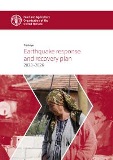
Türkiye: Earthquake response and recovery plan, 2023–2026
05/2023
The earthquakes that struck Türkiye on February 2023 had a devastating impact on the agriculture and rural sectors.

Lebanon: Crisis Response Plan 2023
05/2023
Lebanon is facing one of the most severe economic crises in the world in addition to a protracted refugee crisis. Inflation has skyrocketed and unemployment has reached an all-time high.

Ukraine: Impact of the war on agricultural enterprises
04/2023
The Food and Agriculture Organization of the United Nations in Ukraine has conducted a nationwide survey of agricultural enterprises with land up to 250 hectares.
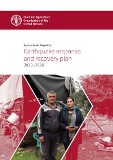
Syrian Arab Republic: Earthquake response and recovery plan, 2023–2026
04/2023
The earthquakes that struck the Syrian Arab Republic on 6 February 2023 caused major damages and losses, affecting both urban and rural areas.

Project brief: Greening the humanitarian response in displacement settings
04/2023
The scale and protracted nature of displacement today highlights more than ever the need to integrate environmental preparedness and response in humanitarian interventions.

Monitoring food security in food crisis countries and territories with conflict situations
04/2023
This is the twelfth update of the Monitoring food security in food crisis countries and territories with conflict situations.

Niger: DIEM – Data in Emergencies Monitoring brief, round 6
04/2023
This Data in Emergencies Monitoring (DIEM-Monitoring) brief shares the results of a sixth-round assessment conducted between February and March 2023 in Niger.

South Sudan: Humanitarian Response Plan 2023
04/2023
Climate extremes, conflict and a poor economic environment continue to drive humanitarian needs in South Sudan, where over half of the population is acutely food insecure.

Ukraine: Humanitarian response update - 20 April 2023
04/2023
This document provides an up-to-date summary of the humanitarian situation in Ukraine and the response of the Food and Agriculture Organization of the United Nations (FAO) on the ground.
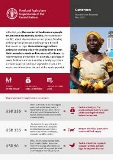
Cameroon: Humanitarian Response Plan 2023
04/2023
In the last year, the number of food insecure people in Cameroon has risen by 800 000. Intercommunity conflict, attacks by non-state armed groups, flooding and rising food prices are pushing people beyond their means to cope.

Haiti: Response overview, April 2023
04/2023
According to the latest Integrated Food Security Phase Classification (IPC) analysis, nearly half of the population in Haiti is in high acute food insecurity (March–June 2023) – an increase compared with 4.7 million people projected in the September 2022 analysis.
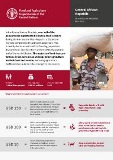
Central African Republic: Humanitarian Response Plan 2023
04/2023
In the Central African Republic, over half of the population is expected to be acutely food insecure during the lean season (May–August) – a 27-percent increase compared with last year’s projection.

Step 1: Disaster risk prioritization - Guidance note series on Anticipatory Action
04/2023
This publication is part of a series of four core guidance notes providing direction on how to identify and prioritize risks (Step 1 – disaster risk prioritization), and accordingly establish an early warning system for Anticipatory Action (Step 2 – early warning systems), design and implement Anticipatory Action programmes (Step 3 – Anticipatory Action programming), and finally assess the impact of such programmes (Step 4 – impact analysis).
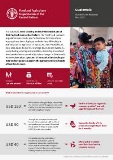
Guatemala: Humanitarian Response Plan 2023
04/2023
In Guatemala, food security and nutrition needs are at their highest in recorded history.
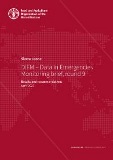
Sierra Leone: DIEM – Data in Emergencies Monitoring brief, round 9
04/2023
This Data in Emergencies Monitoring (DIEM-Monitoring) brief shares the results of a ninth-round assessment conducted between February and March 2023 in Sierra Leone.
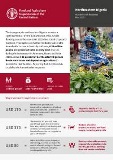
Northeastern Nigeria: Humanitarian Response Plan 2023
04/2023
The insurgency in northeastern Nigeria remains a significant driver of the humanitarian crisis. Severe flooding across the country in 2022 devastated crops and livestock.
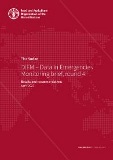
The Sudan: DIEM – Data in Emergencies Monitoring brief, round 4
04/2023
This Data in Emergencies Monitoring (DIEM-Monitoring) brief shares the results of a fourth-round assessment conducted in January 2023 in the Sudan.

